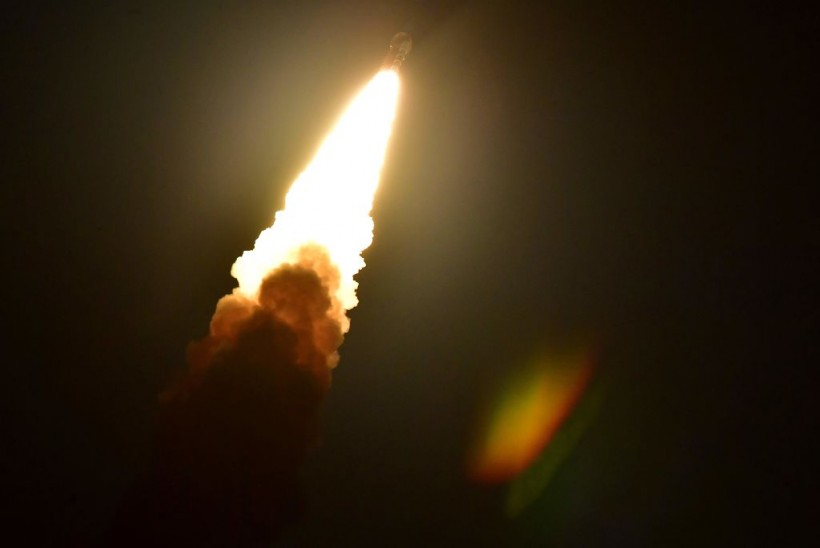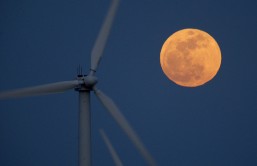
(Photo : Photo by Jim WATSON / AFP) (Photo by JIM WATSON/AFP via Getty Images)
NASA's Orion spacecraft makes its closest approach to the moon and was able to capture stunning images of the Earth and the lunar surface as part of the Artemis mission.
NASA's Orion spacecraft, as part of the space agency's Artemis mission, made its closest approach to the moon and captured stunning views of the Earth and the lunar surface.
The spacecraft whipped around the far side of the moon and buzzed the lunar surface on its way to a record-breaking orbit while carrying test dummies sitting in for human astronauts. The mission is the first time that a capsule has visited the moon since NASA's Apollo program five decades ago.
Orion Spacecraft's Closest Approach
The closest flyby to the moon also represents a huge milestone in the $4.1 billion test flight that began last Wednesday. Video footage of the moon and our pale blue planet from more than 370,000 kilometers left workers "giddy" at Houston's Johnson Space Center.
The space center was home to Mission Control and flight director Judd Frieling said that even flight controllers were "absolutely astounded. Orion program manager Howard Hu said that they simply had smiles all around during the beautiful moment, as per the Associated Press.
The Orion spacecraft was only 130 kilometers away from the moon during the close approach, which occurred as the crew capsule and its three wired-up human dummies were on the far side of Earth's satellite. Due to a half-hour-long communication blackout, flight controllers in Houston were not aware if the critical engine firing went well until the capsule emerged from behind the moon.
The capsule accelerated and attained a speed of more than 8,000 kilometers per hour as it regained radio contact with the space agency. Less than an hour later, the Orion spacecraft soared above Tranquility Base, the spot where Neil Armstrong and Buzz Aldrin landed on July 20, 1969.
According to the New York Times, the Orion spacecraft has been traveling in space since Wednesday after its launch on top of an Artemis rocket. Hu said that the capsule has continued to operate exceptionally, providing NASA with crucial information.
Read Also: India Rocket Launch: Watch Historic Takeoff of Nations First Privately Developed Rocket, Vikram-S
Artemis Missions
One of the main objectives of the mission is to verify whether or not the Orion spacecraft works as it was designed and to allow the space agency to make any necessary adjustments and fixes before live astronauts are taken aboard the capsule for the Artemis II mission that is not set to launch until at least 2024.
Shortly before Orion made its closest approach to the moon on Monday, it fired its engine for 2.5 minutes. This process accelerated the capsule as it swung outward toward what is known in the scientific community as a distant retrograde orbit.
The orbit is quite far, sitting at roughly 65,000 kilometers above the lunar surface. The term retrograde means that the Orion spacecraft is traveling around the moon in a direction that is opposite to the way that the moon travels around the Earth.
NASA's spacecraft captured stunning images when it traveled to the far side of the moon using its cameras located inside and outside the capsule. The space agency shared live views of the moon and our planet as seen from the spacecraft when it began its closest approach to the lunar surface, the New York Post reported.
Related Article: NASA Aims To Have Astronauts Live, Work on Lunar Surface by 2030 Amid Continuous Space Missions








